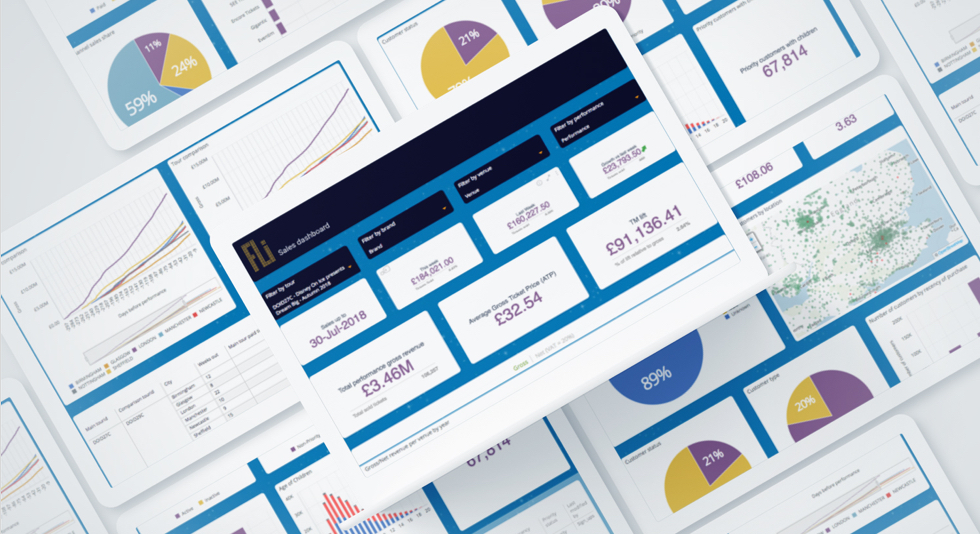Four ways to improve your customer journey mapping
78% of marketers say that customer journey mapping is important to their company’s overall success. They know these visual representations of the customer journey tell the story of its pain and passion points, which mean a more optimised, personalised, omnichannel customer experience. They know that’s essential with today’s digitally accelerated consumers who demand frictionless, individualised experiences. And they know that boosts brand engagement, conversion rates, sales and customer retention. But only a quarter of marketers say they’re proficient at this increasingly important practice, according to Econsultancy. How can they plan out a better route into customer journey mapping?
1. BALANCE CUSTOMER NEEDS WITH BUSINESS GOALS
Every customer journey map needs to be rooted in the needs and expectations of the customer – it is their journey, not the brand’s. But it also needs to reflect a well-constructed commercial strategy or it just becomes a box-ticking exercise. What are you trying to achieve? Identify new revenue opportunities, minimise risk or waste, maximise customer lifetime value?
Finding the balance between what the business wants to achieve and what the customer needs at each touchpoint should be your guide through the process. Forbes research estimates that 55% of marketers have three to five different journey maps in place at any one time. This highlights how different maps might be created according to the business goal or customer need in hand. For example, for Pret a Manger, krow.x used multiple customer journeys that reflected the type of service and customer. From these journeys, they were able to develop 16 service design blueprints across four key territories, which allowed the brand to identify not only where they were falling short of expectation but also how and where to exceed them – resulting in greater satisfaction, brand differentiation and therefore better business results. The key is to keep the process manageable by prioritising those journeys that will have the most business and customer impact.
However many journeys are needed, it’s crucial to get senior buy-in from the outset. Without it, the map will gather dust on a corporate shelf rather than becoming the living, breathing story of an organisation’s customer experience which unifies teams, reduces operational silos, creates a more customer-centric culture and delivers real value to the business.
2. USE DATA TO WALK IN YOUR CUSTOMER’S SHOES
56% of today’s consumers expect all their customer experiences to be personalised. And high-performing businesses are 51% more likely to use data targeting and customer segmentation to connect with them, according to Salesforce. A customer journey map based on research rather than assumption will ensure its story is accurate. Qualitative and quantitative customer research, feedback from sales reps and UX analysis will help create a truthful overview of the customer experience journey.
For example, accurately mapping Mazda customers’ functional and emotional needs over a three-year sales cycle helped the car dealer challenge its initial assumptions that customers would prefer less brand communication, leading to more tailored, frequent comms, which ultimately helped boost customer renewal rates by 12%.
Using needs-based customer profiles helps define audience groups so you can address different audiences’ needs and connect with them more meaningfully, delivering an even bigger business impact. And unifying all the data into one consolidated platform, to create a single customer view, is key for an efficient process. Take Feld Entertainment. The company had a wealth of customer data for its Disney On Ice show, but it wasn’t connected. Pulling it all together into a single data hub made it easier and quicker to interpret, which ultimately helped the company quadruple its in-show spend value on merchandise, food and beverage per order.


3. VISUALISE AND SHARE
Key points to include on a map include brand touchpoints, messages, business goals, customer actions and emotions at different stages and friction areas. The map can tell a ‘current state’ story, identifying moments of truth which help improve the customer experience, whether that’s a tone of voice or brand partnership. Or it can tell a ‘future state’ story to help redesign operations and experiences going forward. For furniture retailer DFS, we did both. We compared stakeholder insights with user experience stories to create a current state, action-based customer journey plan. This helped the company increase customer satisfaction, repeat business and brand advocacy. And it also provided a roadmap for future growth.
Either type of map can be visualised in a variety of ways, from post-it notes on a whiteboard or wall, to Excel spreadsheets, to infographics or mapping software. The most important thing is that the map makes sense and is shared with everyone who will be using it. So that it acts as a collaborative tool for the business, connecting teams around a customer-centric focus, adding even greater business value. Or, again, it’ll just sit, unused, on a shelf.
4. REGULARLY MEASURE
Customer journey mapping is a continuous journey. So agreeing on measurable KPIs with key stakeholders from the outset, then reviewing them regularly, dependent on business needs, is crucial. How have initial objectives and success metrics evolved? Do they need optimising? Are there any new ones to include? Look to refresh the customer journey map accordingly. These regular reviews will help identify gaps and opportunities to streamline customer journeys even more – which will ultimately help grow revenue and retention.
CHAT TO US
To elevate your customer experience
Contact Eliot Sykes, Head of Consultancy
eliot.sykes@krowgroup.com





